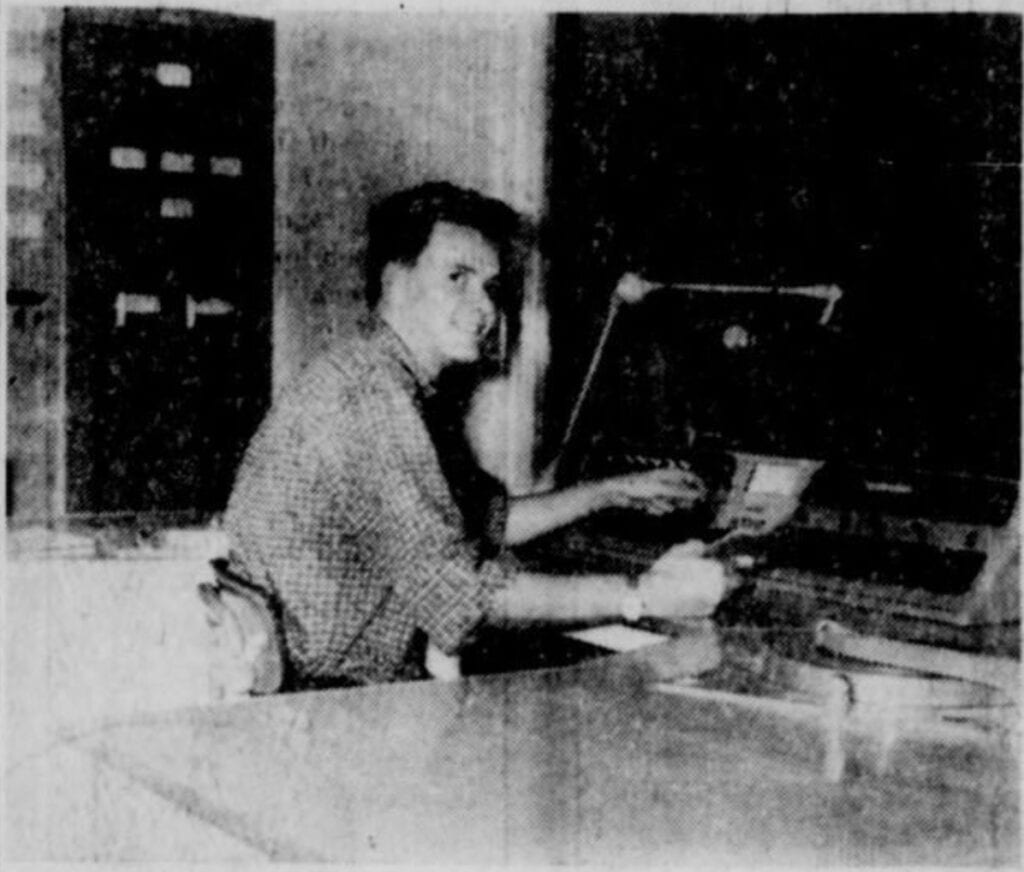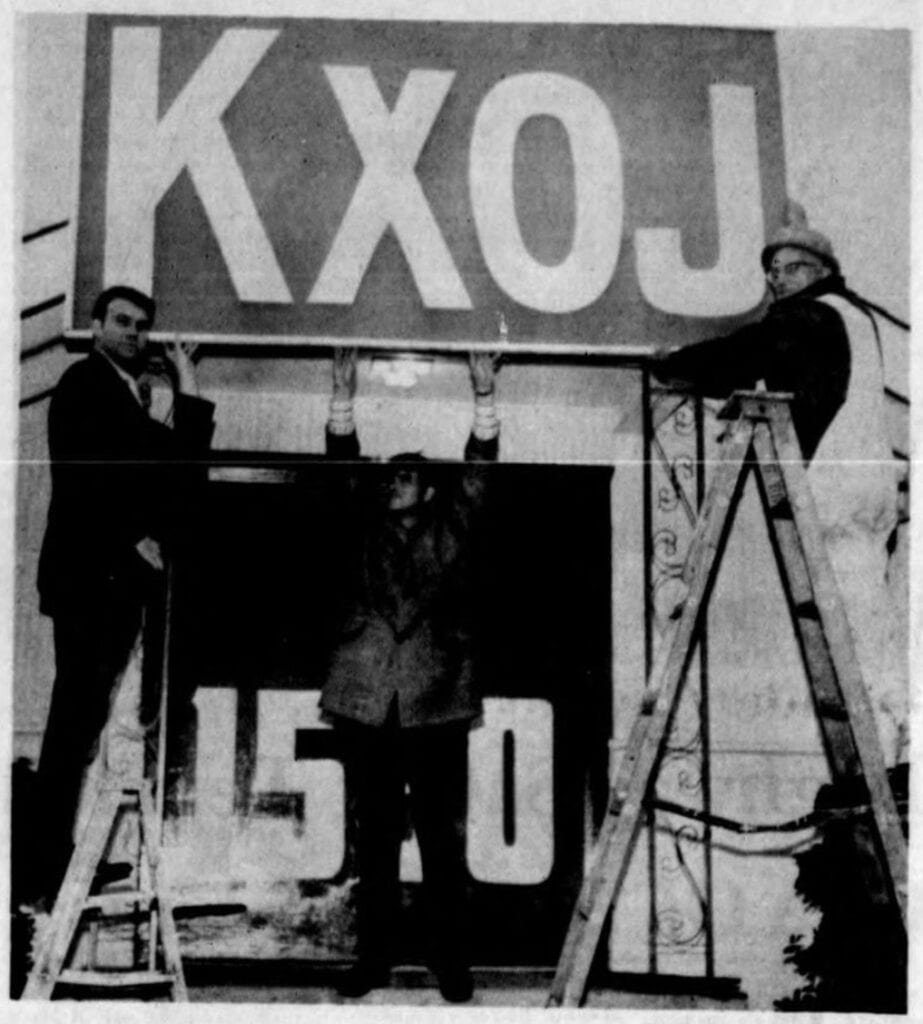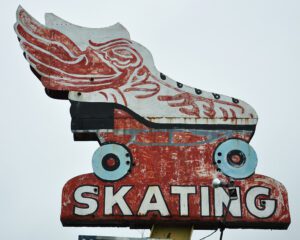Radio, the technology that many swore would kill the newspaper, has undoubtedly made an impact around the world. Before the popularization of television, families gathered around the radio to listen to their favorite shows. Local radio stations became a common source for music and news, and Sapulpa eventually joined the foray into radio broadcasting in June of 1962.

AM radio station KREK was located on Old 66, north of Sapulpa. It was co-owned by R.B. Bell of Poteau and W.E. Minshall of Tulsa. Minshall went on to start a television station, WTVX, in Gainesville, Florida.
The grounding system consisted of 11.75 miles of buried copper wire. Each of the three antennas was 135 ft. tall in a configuration that beamed the signal in a South-South Easterly direction.
KREK operated at 1,550 Khz and had a whopping 500 watts of Effective Radiated Power. For comparison, Most AM stations are typically transmitted at 5,000 watts, and clear-channel AM stations (AM radio stations that have the highest level of protection from interference) would transmit 50,000 watts of power.
It was a daylight radio station, which meant the station broadcast from sunup to sundown. Most AM stations are required by the FCC to reduce power or cease operation at night to avoid interference with other stations.
During nighttime hours the AM signals can travel hundreds, if not thousands of miles by reflection from the ionosphere, a phenomenon called skywave propagation.
In the case of KREK, since it was a relatively low-powered station, other stations interfered with it. A station in Veracruz, Mexico was assigned the same frequency. I can remember as a teenager, when I left my car radio on 1550 at night, the Mexican station came in loud and clear.
The first full-time announcer was a Sapulpan named Bob Southard, the announcer/engineer was Ken Cox, and the Chief Engineer was Ken Vinyard. In 1963, Gayle Lee was Chief Engineer.
KREK played music but primarily had a talk show format in the early days. Bill Upchurch and Pete Shaw were two disc jockeys who became local celebrities. The legendary “Rockin” John Henry was also a disc jockey at KREK.
Local high school seniors were allowed to be DJs. Jane Johnson recalls that her high school speech class deejayed a Saturday morning radio show on KREK. They played records and dedicated songs to their friends. Jane and Sharon Woolery did a comedy routine about one of their acquaintances. Jane said her favorite dedication was when Ed Winkler was hosting; he sent a song out to the Sapulpa Police Department: “Catch Us If You can.”

KREK DJs conducted on the air promotions such as having listeners call in and answer questions posed to them. If a listener answered correctly they would win a 45 record. Kay Knott Price remembers winning a 45 and her dad taking her to the station to redeem the prize. According to Price, the DJ answered the door but did not know anything about a contest. He did, however, give her a 45 record. “I wasn’t even disappointed. I was a kid and star-struck with being in a real live radio station.”
Another promotion was to give $15.50 to the first five callers that answered the phone, “It pays to listen to KREK.”
The station also promoted a “Community Club Awards program whereby members of civic clubs earned points that would give them money for their clubs by purchasing products or registering with local merchants and organizations.
The station played an active role in the community and hosted talk shows and forums on current political and community topics. One example was a daily program informing listeners about the evils of urban renewal, sponsored by the East Dewey merchant’s Association. There was a morning show called “Party Line” which was a local version of Good Morning America.
Local school sporting events were broadcast as well as Sunday morning church from local churches such as the First Baptist Church.
Local news was also a mainstay of the station. When KREK was on the air barely a week, representatives of the station were first on the scene of an oilfield fire.
Many local merchants advertised and offered their own promotions. I remember when Whittaker’s Redbud had its grand opening, the first five callers into the station after an ad for the grocery store would receive a free bag of groceries. My mother won one of those prizes.
On January 4, 1971, KREK changed its call letters to KXOJ. Station management announced a new “adult” format featuring contemporary music and “the better westerns.” The press release stated that there would be more music and less talk, as well as new equipment to improve the quality of the broadcasts.

The station changed owners several times over a decade, and at one point, R.B. Bell foreclosed on the enterprise, Ed Livermore and his wife subsequently purchased the station. Mike Stephens, who previously owned KHEN in Henryetta, took over the station in May 1973.
In 1976, when I started my first repair shop, Stephens convinced me to advertise on KXOJ. The ad ran with the phrase “Charles Betzler, Jr. is back in town.” I was pleased with the ad until one day when I was rather ridiculed. I was sitting at a stoplight on Main St. at McKinley Ave. in my El Camino with advertising painted on the sides. Another car pulled up beside me with several young ladies who were smiling at me. I thought to myself, “They must think I’m cute,” WRONG! They rolled down the passenger’s window, leaned out of the car, and laughingly bellowed, “Charles Betzler Jr. is back in town!” Needless to say, I immediately changed the script.
In January 1976 KXOJ was embroiled in a journalistic conflict with the Sapulpa Herald. KXOJ had announced that Coach Paul Reagor had confessed to killing Coach Jerry Bailey. The Sapulpa Herald quoted Tulsa District Attorney Buddy Fallis as saying no one in his office had released any information about a confession. It should be pointed out that KXOJ never mentioned the DA as its source and that their reporting was accurate.
Stephens was granted an FM license for the station in 1977. Eventually, the AM station ceased operation and KXOJ FM began operating out of the Citiplex towers, where it currently broadcasts.
As with many small-town newspapers, many small-town radio stations have closed or sold. KREK/KXOJ was an integral part of this community. Though it is gone, it is not forgotten.










